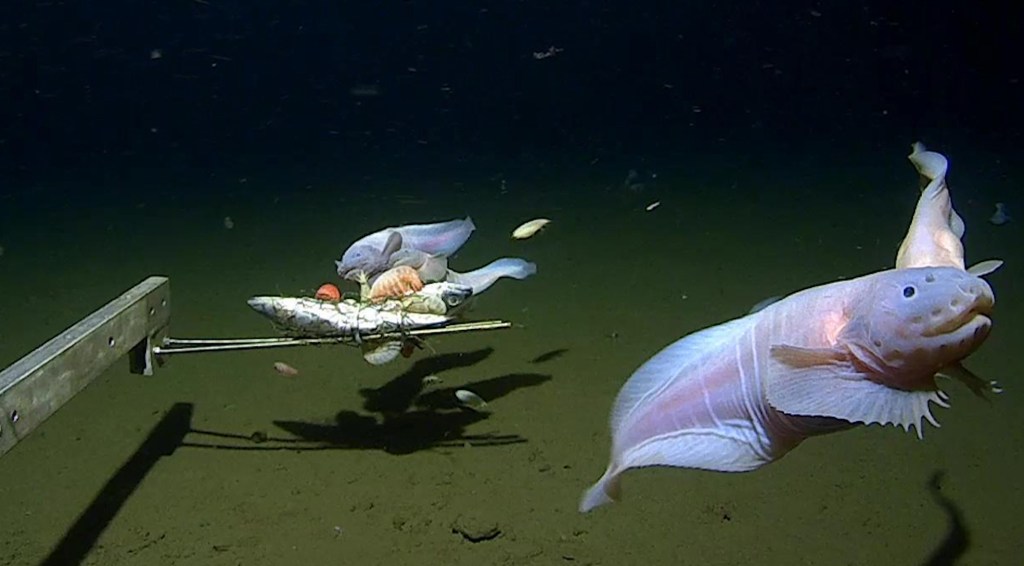No, those aren’t aliens in that video, but they might as well be. Those bizarre, colorful, wacky, inscrutable earthlings may look like 3D renditions of a Picasso painting, but in fact they’re never-before-seen marine creatures that inhabit the world’s deepest abyss that is the Marianas Trench—a valley more than 36,000 feet (6.83 miles) below sea level in the western Pacific south of Japan.
While the rest of us are are weirded out and amazed by the diversity of life down there, so too are the scientists still trying to figure what in the world these creatures even are. Turns out, it’s a WTF for everyone.
Videos by VICE
“It’s just so exciting,” Dr. Shirley Pomponi, natural products biologist and research coordinator at the Harbor Oceanographic Institution, told New Scientist. “We’re finding new things every day.”
From April 10 to July 10, NOAA’s (National Oceanic and Atmospheric Administration) Okeanos research ship had been cruising the Pacific just above the Marianas Trench. Sonar technology and a remotely operated vehicle allowed scientists to study the depths of the trench without actually going down there, themselves.
The three-cruise expedition onboard the NOAA Ship Okeanos Explorer was intended to acquire basic information about deepwater habitats around the trench and learn about connections between marine communities at varying “seamounts and hydrothermal vent sites.” (Hydrothermal vents are the coming together of magma and seawater, formed by underwater volcanoes at spreading ridges and convergent plate boundaries.) In spite of decades’ worth of work in the region, it remained a black hole in terms of exploration and understanding.
The three legs of the 69-day expedition used 24/7 telepresence mapping sensors to map out the southern half, and then the northern regions of the area. The Okeanos Explorer was the United State’s first and so far, only federal ship dedicated to exploring the ocean using telepresence operations to connect with the majority of the research team on shore. Telepresence technology, real-time video, and satellite transmission of oceanographic data enabled scientists around the country to tune in.
Four months later, we’ll conclude that the world will astound us in strange and curious ways. Now, onto giving names to all those freakish, curious critters down there.



